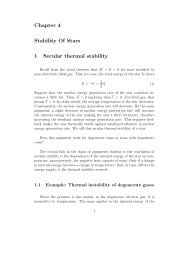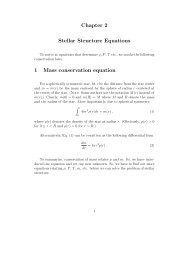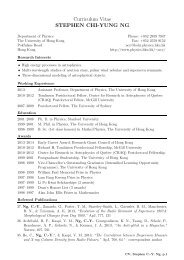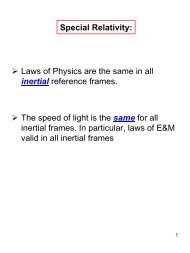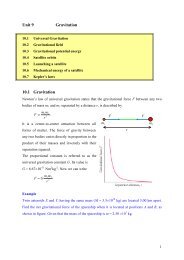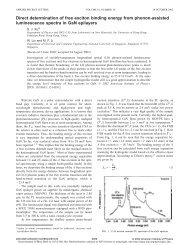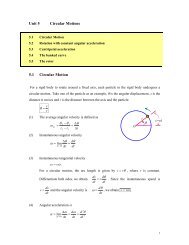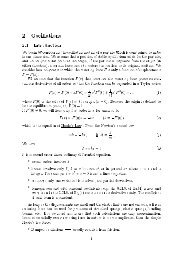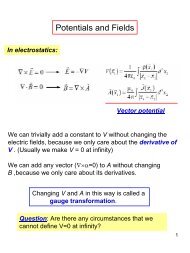Thermal Behavior of Matter and Heat Engines - Department of ...
Thermal Behavior of Matter and Heat Engines - Department of ...
Thermal Behavior of Matter and Heat Engines - Department of ...
You also want an ePaper? Increase the reach of your titles
YUMPU automatically turns print PDFs into web optimized ePapers that Google loves.
pipelines typically include loops that allow for expansion <strong>and</strong> contraction when the<br />
temperature changes.<br />
11.12 Area expansion<br />
Since the length <strong>of</strong> an object changes with temperature, it follows that its area changes<br />
as well. The initial area <strong>of</strong> the square is A = L 2 . If the temperature <strong>of</strong> the square is<br />
changed by ∆T, <strong>and</strong> the length <strong>of</strong> each side <strong>of</strong> the square by ∆L,<br />
2<br />
2 2 2<br />
2 2 2<br />
A'<br />
= ( L + ∆L)<br />
= ( L + α L∆T<br />
) = ( L + 2αL<br />
∆T<br />
+ α L ∆T<br />
) .<br />
2 2<br />
Neglect the higher order term, e.g. α L ∆T<br />
2<br />
2<br />
, since α ∆T<br />
2<br />
relatively small, we have<br />
2 2<br />
A'<br />
= L + 2αL<br />
∆T<br />
= A + 2αA∆T<br />
That is<br />
∆A<br />
≈ 2 αA∆T<br />
.<br />
Though the calculation works out from square, it is applicable to area <strong>of</strong> any shape.<br />
Example<br />
A washer has hole in the middle. As the washer is heated, does the hole (a) exp<strong>and</strong>,<br />
(b) shrink, or (c) stay the same?<br />
3



